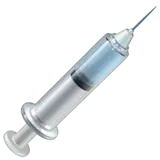Cucurbit downy mildew


CLASSIFICATION
Chromista, Peronosporea, Peronosporaceae, downy mildew, Pseudoperonospora, Pseudoperonospora cubensis
ABOUT
Downy mildew of cucurbits is a plant disease caused by the pathogen Pseudoperonospora cubensis. Typical symptoms include small yellow spots or water-soaked lesions on top of the leaves, which can later turn brown in the center.
How to treat?
 Biological
BiologicalIf possible remove and destroy the infected parts of the plant. Burn it, toss it into the garbage, or bury it deeply. Do not compost.
If the infection is widespread, remove and destroy the infected plant. Burn it, toss it into the garbage, or bury it deeply. Do not compost.
Apply ecological products for plant protection (e.g. baking soda, hydrogen peroxide, copper spray).
 Chemical
ChemicalIf necessary, apply fungicide containing cyazofamid (GHS09: Environmental hazard).
If necessary, apply fungicide containing propamocarb hydrochloride (GHS07: Harmful).
 Disease prevention
Disease preventionWater the soil surface, avoid watering leaves.
Improve the air circulation around the plant (e.g. by pruning excess foliage or increasing the spacing between plants).
Ensure having good soil drainage to avoid overwatering.
Use resistant species and cultivars as well as healthy, certified seeds and seedlings.
If necessary, use chemical products as a prevention (e.g. copper-based spray). These chemicals may lead to the development of resistant strains.